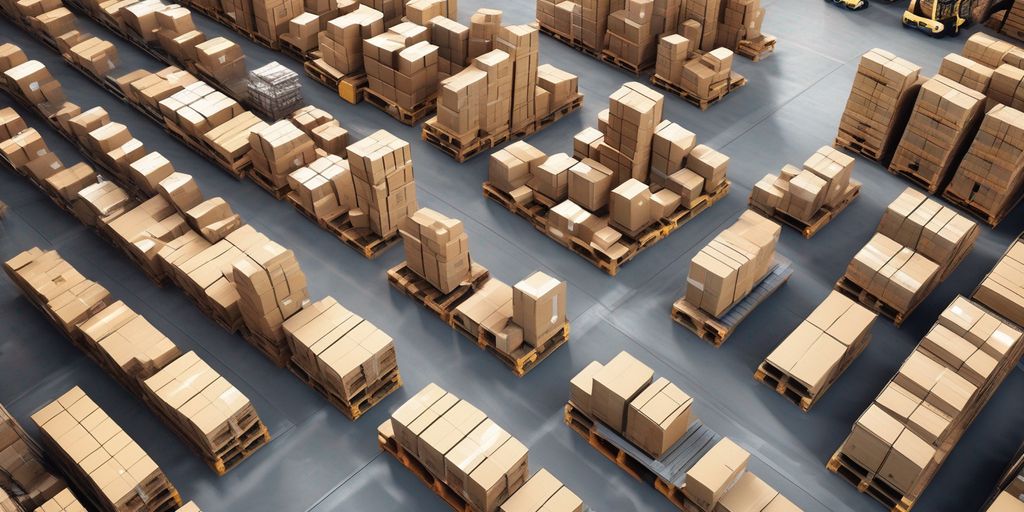Buying a used forklift can be a smart choice if you know what to look for. It saves money and can be just as reliable as a new one if you find the right one. However, there are several important factors to consider to ensure you make a wise investment. This guide will help you understand what to check and keep in mind when purchasing a used forklift.
Key Takeaways
- Check the forklift's usage history to understand its past applications and maintenance records.
- Inspect the physical condition, including tires, wheels, and any signs of leaks or damage.
- Consider the brand and availability of spare parts to ensure easy maintenance and repairs.
- Test the battery and fuel type to ensure they are in good condition and compatible with your needs.
- Ensure all safety features are functional, including seatbelts, brakes, and warning alarms.
Evaluating the Forklift's Usage History
When buying a used forklift, understanding its past is crucial. This helps you gauge its future performance and potential issues. Here are the key areas to focus on:
Understanding Previous Applications
Knowing how the forklift was used before can give you insights into its wear and tear. For example, forklifts used in cold storage might have anti-corrosion features. Ask about the environments it operated in and the types of loads it handled.
Checking for Wear and Tear
Look for signs of wear and tear. Inspect the tires, mast, and forks for any damage. A forklift used daily will show more wear than one used occasionally. Check the hours logged to understand its usage intensity.
Reviewing Maintenance Records
Maintenance records are a goldmine of information. They tell you if the forklift was well-cared for. Regular servicing and timely repairs can extend its lifespan. Ask for detailed service history to ensure there are no hidden issues.
Inspecting the Physical Condition

When buying a used forklift, it's crucial to thoroughly inspect its physical condition. This ensures you avoid unexpected repair costs and maintain safety standards.
Examining Tires and Wheels
Start by checking the tires for any signs of wear and tear. Look for low tread, cracks, or punctures. If the tread is worn past the safety line, the tires will need replacing. You can also use the penny test: place a penny in the tire groove, and if you can see the top of Lincoln's head, the tread is too low.
Checking for Leaks and Fluid Levels
Inspect the forklift for any leaks around the radiator, mast cylinders, and transmission. Leaks can indicate damage that might require costly repairs. Also, check the fluid levels, including engine oil and transmission fluid. Low levels might suggest leaks or poor maintenance.
Assessing the Mast and Forks
The mast and forks are critical components of a forklift. Examine the mast for smooth operation and check for any cracks or damage. Look closely at the forks for bends or cracks, and compare the thickness of the fork blade's heel to the upright fork shank. If the heel is thinner, it indicates significant wear and may need replacement.
A thorough inspection of the physical condition can save you from unexpected repair costs and ensure the forklift's longevity.
Considering the Brand and Parts Availability

When buying a used forklift, the brand you choose can make a big difference. Opting for a reputable brand might be more expensive, but it often ensures durability and better performance. Established brands generally mean easier access to spare parts. It can be frustrating to have a forklift down and not find the right parts for repair.
Reputable Brands vs. Lesser-Known Brands
Choosing a well-known brand can save you a lot of trouble in the long run. These brands are known for their reliability and often have a network of dealers and service centers. On the other hand, lesser-known brands might be cheaper upfront but could cost more in the long run due to harder-to-find parts and fewer service options.
Availability of Spare Parts
Before making a purchase, check if spare parts for the forklift are readily available. If you opt for a unique model that requires specific parts, you should evaluate whether you can easily access these parts, how much they cost, and how often you may need to replace them. The same principle applies to servicing the forklift. While some dealers may offer a support team to deliver repairs and maintenance, others will not.
Cost of Replacement Parts
Replacement parts can add up quickly. Make sure to factor in the cost of parts when setting your budget. Sometimes, a cheaper forklift can end up being more expensive if the parts are costly or hard to find. Always consider the long-term costs, not just the initial purchase price.
Testing the Battery and Fuel Type

Evaluating Battery Health for Electric Forklifts
When buying an electric forklift, the battery's health is crucial. Batteries typically last between 5 to 7 years. To estimate the remaining life, ask the dealer about the forklift's usage history, such as the number of shifts it operated. Look for signs of damage like acid leaks and corrosion. Check the battery's data plate to ensure it has the correct weight and size for the forklift.
Understanding Fuel Efficiency for Non-Electric Forklifts
For non-electric forklifts, understanding fuel efficiency is key. Whether the forklift uses diesel, propane, or gas, you should check how efficiently it uses fuel. A forklift that consumes too much fuel can be costly in the long run. Make sure to verify the fuel type and its compatibility with your operations.
Checking Fuel Type Compatibility
It's important to ensure the forklift's fuel type matches your needs. Different fuel types have different benefits and drawbacks. For example, propane forklifts are often used indoors due to lower emissions, while diesel forklifts are more powerful and suited for outdoor use. Verify that the fuel type aligns with your operational requirements.
Ensuring Safety Features are Functional
When buying a used forklift, it's crucial to make sure all safety features are in good working order. This ensures the operator's safety and compliance with regulations.
Inspecting Seatbelts and Guards
Operators should ensure that all safety devices, such as seat belts and overhead guards, are in place and functioning correctly. Check for any damage or wear that could compromise safety.
Testing Brakes and Lights
Brakes and lights are essential for safe operation. Test the brakes to make sure they work without any lags. Verify that all lights, including safety and security lighting, are operational.
Verifying Warning Alarms and Indicators
Make sure all warning alarms and indicators are functioning. This includes checking the horn, seat adjustments, and any other safety-related indicators. A reliable seller will emphasize the importance of these features to ensure a safe and efficient purchase decision.
Setting a Realistic Budget
When buying a used forklift, setting a realistic budget is crucial. This ensures you don't overspend and can cover any unexpected costs that may arise.
Estimating Initial Purchase Costs
Start by understanding the initial purchase price. Used forklifts are generally cheaper than new ones, but prices can vary based on the model, age, and condition. For example, a used 5,000 lb. LPG-powered cushion forklift can range from $9,900 to $21,900, while a new one might cost between $24,000 and $30,000.
Considering Potential Repair Costs
Used forklifts often come with higher maintenance costs due to wear and tear. On average, a used forklift can cost around $3.50 per hour in maintenance, compared to $1.00 per hour for a new one. Factor these potential repair costs into your budget to avoid surprises.
Factoring in Long-Term Maintenance
Long-term maintenance is another important consideration. Regular upkeep is essential to keep the forklift running smoothly and safely. This includes costs for parts replacement, routine checks, and any necessary repairs. By planning for these expenses, you can ensure your forklift remains operational and safe for years to come.
Understanding your specific needs and setting a realistic budget will help narrow the options and make the selection process more manageable.
Conclusion
In conclusion, buying a used forklift can be a smart decision if you take the time to consider all the important factors. Always check the forklift's history, inspect it thoroughly, and ensure it meets your specific needs. Remember to prioritize safety and think about future maintenance costs. By doing your homework and making an informed choice, you can find a reliable forklift that will serve your business well for years to come.
Frequently Asked Questions
What should I check in a used forklift's history?
Look into how the forklift was used before. Check its maintenance records and see if it was used in harsh environments. Knowing its past can tell you a lot about its condition.
How can I tell if the tires on a used forklift are in good shape?
Inspect the tires for any signs of wear like cracks, low tread, or chunking. Good tires should have plenty of tread left and no visible damage.
Why is it important to choose a reputable brand for a used forklift?
Reputable brands are usually more durable and offer better performance. They also make it easier to find spare parts when you need repairs.
What should I look for in a forklift's battery if it's electric?
Check the battery's age and how well it holds a charge. Replacing a battery can be expensive, so make sure it's in good condition.
How do I know if the safety features on a used forklift are working?
Test all the safety features like seatbelts, brakes, and lights. Make sure they are all functional and there are no warning lights or sounds.
What costs should I consider when setting a budget for a used forklift?
Think about the initial purchase price, potential repair costs, and long-term maintenance. This will help you set a realistic budget.




Leave a comment
This site is protected by hCaptcha and the hCaptcha Privacy Policy and Terms of Service apply.